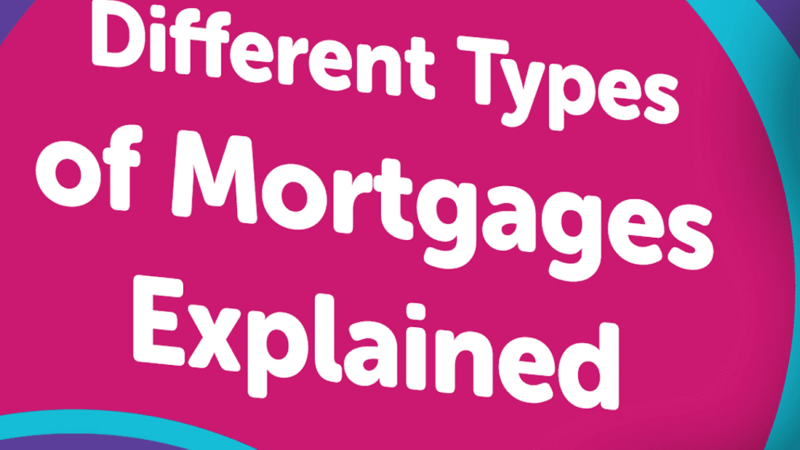How Much Can I Borrow For a Mortgage Nationwide?

Table of Contents
ToggleHow Much You Can Borrow for a Mortgage Nationwide-
In the UK, mortgage borrowing is a common property purchase method. Here’s a brief overview of the key points to understand:
- A mortgage is a loan that enables individuals to buy a home by spreading the cost over time.
- Mortgage lenders in the UK include banks, building societies, and specialist lenders.
- There are different types of mortgages, such as fixed-rate, variable-rate, and tracker mortgages.
- A deposit is required, and lenders have minimum deposit requirements.
- Affordability assessments consider factors like income, expenses, and credit history.
- Mortgage rates vary and can affect monthly repayments.
- Mortgage terms typically span several years.
- Additional costs include arrangement fees, valuation fees, and solicitor fees.
- Government schemes like Help to Buy and Shared Ownership can assist with mortgage borrowing.
- Mortgage protection, such as life insurance or income protection, is essential.
Factors That Affect Mortgage Borrowing Capacity-
When applying for a mortgage loan, several factors come into play that can affect your borrowing capacity. Lenders consider these factors to assess how much they will lend you. Understanding these factors can help you determine your borrowing capacity. Here are some key factors that can impact your mortgage borrowing capacity nationwide:
- Income: Your income is a critical factor that lenders consider. They assess your regular income to determine whether you can afford the mortgage repayments. This includes evaluating your employment type, income stability, and the amount you earn.
- Expenses and Debt-to-Income Ratio: Lenders evaluate your monthly expenses and debts to calculate your debt-to-income ratio. This ratio compares your monthly debt payments to your monthly income. A lower ratio indicates a lower financial burden and may increase your borrowing capacity.
- Credit History and Credit Score: Your credit history and credit score significantly determine your borrowing capacity. Lenders review your credit report to assess your creditworthiness, including your repayment history, outstanding debts, and any defaults or bankruptcies. A good credit score and a clean credit history can improve your chances of borrowing more.
- Loan-to-Value (LTV) Ratio: The loan-to-value ratio compares the mortgage amount you’re seeking to the property’s appraised value or purchase price. Lenders typically have maximum LTV limits, meaning they won’t lend the full property value. The higher the deposit you can provide, the lower the LTV ratio, which can increase your borrowing capacity.
- Affordability Assessments: Lenders conduct affordability assessments to determine whether you can comfortably afford the mortgage repayments. They consider your income, expenses, and other financial commitments. Affordability stress tests may also be conducted to ensure you can manage potential interest rate increases in the future.
- Employment Status and Stability: Lenders assess your employment status and stability. Being employed in a permanent position is more favorable as it indicates a stable income. Self-employed individuals may need additional documentation, such as tax returns or business accounts, to demonstrate their income stability.
- Interest Rates: Mortgage interest rates can impact your borrowing capacity. Higher interest rates increase your monthly repayments and may reduce the amount you can borrow.
Income and Employment Considerations for Mortgage Borrowing-
Income and Employment Considerations for Mortgage Borrowing Regarding mortgage borrowing, your income and employment are crucial in determining your eligibility and borrowing capacity. Lenders assess these factors to ensure that you have a stable and sufficient income to meet your mortgage obligations. Here are some key considerations related to income and employment when applying for a mortgage:
- Employment Type: Lenders consider the type of employment you have. Permanent, full-time employment is generally viewed more favorably, as it provides stability and a regular income. However, self-employed individuals and contract workers may also qualify for a mortgage. Still, they may need to provide additional documentation, such as tax returns or contracts, to verify their income.
- Income Verification: Lenders require documentation to verify your income. This typically includes payslips, tax returns, bank statements, and employment contracts. The lender will assess your income level and its stability to ensure you can comfortably afford the mortgage repayments.
- Debt-to-Income Ratio: Lenders calculate your debt-to-income ratio, which compares your monthly debt payments to your gross monthly income. This ratio helps determine your ability to manage additional mortgage debt. A lower debt-to-income ratio indicates a lower financial burden and may increase your borrowing capacity.
- Bonuses and Overtime: Lenders may evaluate these additional earnings if you receive bonuses or overtime pay as part of your income. However, they may require a history of consistent bonus payments or overtime hours to include in your income calculation.
- Multiple Income Sources: If you have various sources of income, such as rental income or a second job, lenders may consider these sources when assessing your overall income. However, they may require documentation and proof of stability for each income source.
- Future Income: If you expect an increase in income, such as a salary raise or promotion, you can discuss this with the lender. They may consider the potential future income in their assessment, but it should be supported by evidence, such as an employment contract or a letter from your employer.
- Employment History: Lenders typically consider your employment history to assess stability and reliability. They may look at factors such as the length of time with your current employer, any recent job changes, and any gaps in employment. A consistent employment history demonstrates stability and may strengthen your mortgage application.
Debt-to-Income Ratio: Assessing Your Financial Health -
The debt-to-income (DTI) ratio is a key financial metric that lenders use to assess your financial health and determine your borrowing capacity. It compares your monthly debt payments to your gross monthly income and helps lenders evaluate your ability to manage additional debt. Understanding your DTI ratio is crucial when applying for a mortgage or any other type of loan. Here’s an overview of the debt-to-income ratio and its significance:
- Calculating Your DTI Ratio: To calculate your DTI ratio, add up all your monthly debt payments, including mortgage payments, credit card bills, car loans, student loans, and other outstanding debts. Divide this total by your gross monthly income (before taxes and other deductions). Multiply the result by 100 to get the percentage.
- DTI Ratio = (Total Monthly Debt Payments / Gross Monthly Income) x 100
- Types of DTI Ratios: There are two types of DTI ratios that lenders consider:
- a. Front-End DTI Ratio: This ratio considers only your housing-related expenses, such as mortgage payments, property taxes, and insurance premiums, divided by your gross monthly income. Lenders generally prefer this ratio to be below 28%.
- b. Back-End DTI Ratio: This ratio includes all your monthly debt payments, including housing expenses, divided by your gross monthly income. Lenders typically look for a back-end DTI ratio below 36%, which may vary depending on the lender and loan program.
- Significance of DTI Ratio: Lenders use the DTI ratio to measure their ability to repay additional debt. A lower DTI ratio indicates you have more disposable income to handle new financial obligations, making you a lower-risk borrower. A higher DTI ratio suggests that a larger portion of your income is allocated to debt payments, which may make it harder for you to manage additional borrowing.
- Impact on Mortgage Approval: Your DTI ratio is important in mortgage approval. Most lenders have maximum DTI limits that borrowers must meet to qualify for a mortgage. Exceeding these limits may affect your ability to secure a mortgage or result in higher interest rates. A lower DTI ratio demonstrates a stronger financial position and may increase your chances of loan approval and favorable terms.
- Managing Your DTI Ratio: If your DTI ratio is higher than desired, there are several strategies to improve it:
- a. Increase Income: Consider ways to increase your income, such as taking on additional work, getting a raise, or pursuing higher-paying job opportunities.
- b. Reduce Debt: Pay off existing debts to decrease monthly debt payments and improve your DTI ratio.
- c. Limit New Debt: Avoid taking on new debt, such as credit card balances or loans, while applying for a mortgage.
Understanding and managing your DTI ratio is essential for maintaining a healthy financial profile. It affects your mortgage borrowing capacity and reflects your overall financial stability. Keeping your DTI ratio in check allows you to position yourself for better loan options and long-term financial well-being.
Credit Score and Credit History: Impact on Mortgage Borrowing -
Your credit score and history play a significant role in mortgage borrowing. Lenders use this information to assess your creditworthiness and determine the terms and conditions of your mortgage. Here’s an overview of how credit score and credit history impact mortgage borrowing:
1- Credit Score:
- Definition: Your credit score is a numerical representation of your creditworthiness based on your credit history. It helps lenders gauge the risk of lending to you.
- Importance: A higher credit score indicates a lower credit risk, making you more attractive to lenders. It can result in better interest rates, loan terms, and higher borrowing amounts.
2- Credit History:
- Definition: Your credit history records your past credit activities, including loans, credit cards, and payment history.
- Assessment: Lenders review your credit history to assess your financial responsibility, payment patterns, and any potential risks associated with lending to you.
3- Impact on Mortgage Borrowing:
- Loan Approval: Lenders use credit scores and credit history to determine your eligibility for a mortgage. Higher credit scores increase your chances of approval.
- Interest Rates: A higher credit score often translates into lower interest rates on your mortgage. This can result in significant long-term savings.
- Loan Terms: Lenders may offer more favorable loan terms, such as longer repayment periods or lower down payment requirements, to borrowers with good credit.
- Borrowing Amount: Your creditworthiness influences the maximum amount you can borrow. A strong credit profile may allow you to access larger loan amounts.
4- Improving Credit Score and Credit History:
- Timely Payments: Make all your credit payments on time to demonstrate financial responsibility.
- Debt Management: Keep your credit utilization ratio low by managing your debts and avoiding maxing out your credit cards.
- Credit Mix: Maintain a diverse credit mix, including installment loans and revolving credit accounts, to showcase your ability to handle different types of credit.
- Length of Credit History: Building a longer credit history establishes a responsible credit management track record.
- Regular Monitoring: Regularly review your credit report for errors or discrepancies and take steps to address them promptly.
Loan-to-Value Ratio: Evaluating Your Down Payment-
The loan-to-value (LTV) ratio is a crucial factor in mortgage borrowing, as it determines the loan amount relative to the property’s appraised value. Evaluating your down payment is essential when considering the LTV ratio. Here’s an explanation of how the LTV ratio and down payment affect your mortgage borrowing:
1- Understanding Loan-to-Value Ratio:
- Definition: The LTV ratio represents the percentage of the property’s appraised value that you are borrowing. It is calculated by dividing the loan amount by the property’s value.
- LTV Ratio Example: If you are borrowing £200,000 for a property appraised at £250,000, the LTV ratio would be 80% (£200,000 ÷ £250,000 = 0.8 or 80%).
2- Down Payment:
- Definition: The down payment is the initial payment towards the property’s purchase price, typically expressed as a percentage of the total value.
- Importance of Down Payment: The down payment directly affects the LTV ratio, reducing the amount you need to borrow. A larger down payment means a lower LTV ratio.
3- LTV Ratio and Mortgage Borrowing:
- Maximum LTV Ratio: Lenders have specific maximum LTV ratios they are willing to accept, depending on factors such as the type of mortgage and your financial profile.
- Lower LTV, Better Terms: A lower LTV ratio (e.g., 80% or below) is generally considered less risky by lenders, resulting in better interest rates, loan terms, and access to more mortgage products.
- High LTV and Mortgage Insurance: If your LTV ratio exceeds a certain threshold set by the lender, you may be required to obtain mortgage insurance to protect the lender in case of default.
4- Evaluating Your Down Payment:
- Affordability: Consider your financial situation and determine how much you can afford as a down payment.
- Savings and Resources: Assess your savings and other potential sources of funds that can contribute to the down payment.
- Down Payment Options: Explore various down payment options, such as personal savings, gifts from family, or government assistance programs.
5- Impact of LTV Ratio on Mortgage Costs:
- Interest Rates: Lenders may offer lower interest rates for lower LTV ratios, resulting in long-term cost savings.
- Mortgage Affordability: A lower LTV ratio can improve mortgage affordability by reducing monthly mortgage payments.
Interest Rates and Affordability of Nationwide -
When borrowing a mortgage from Nationwide Bank, interest rates play a significant role in determining the affordability of your monthly payments. Understanding how interest rates impact your borrowing and calculating monthly payments is essential. Here’s an overview of interest rates and affordability from Nationwide Bank:
1- Interest Rates from Nationwide Bank:
- Nationwide Bank offers various mortgage products with different interest rate options.
- Fixed Rate: Nationwide Bank provides fixed-rate mortgages where the interest rate remains consistent throughout the loan term.
- Variable Rate: Nationwide Bank also offers variable-rate mortgages, where the interest rate can fluctuate based on market conditions.
2- Affordability and Monthly Payments:
- Principal and Interest: Your monthly mortgage payment comprises principal and interest components. The principal is the amount borrowed, while the interest is the cost of borrowing.
- Amortization: Mortgage loans from Nationwide Bank are typically amortized, meaning the payments are spread out over a specific period, such as 15 or 30 years.
- Affordability Factors: Nationwide Bank considers your income, expenses, debt-to-income ratio, and down payment when determining the mortgage amount you can afford and the corresponding monthly payment.
3- Calculation of Monthly Payments:
- Loan Amount: The loan amount represents the total borrowed from Nationwide Bank, excluding any down payment.
- Interest Rate: The interest rate, expressed as an annual percentage rate (APR), determines the cost of borrowing over the loan term.
- Loan Term: The loan term is the duration of the mortgage, typically measured in years.
- Amortization Schedule: You can use mortgage calculators provided by Nationwide Bank or other financial tools to generate an amortization schedule outlining the breakdown of monthly payments over the loan term.
4- Impact of Interest Rates on Affordability:
- Lower Interest Rates: Lower interest rates from Nationwide Bank result in lower monthly payments, increasing affordability and allowing you to borrow more.
- Higher Interest Rates: Higher interest rates increase the cost of borrowing and lead to higher monthly payments, potentially reducing affordability or requiring a smaller loan amount.
5- Additional Factors:
- Mortgage Insurance: Depending on the loan-to-value ratio and other factors, you may be required to pay mortgage insurance, which affects your monthly payment.
- Escrow: Nationwide Bank may require an escrow account to collect and manage property taxes and insurance, which can be included in your monthly payment.
Mortgage Affordability Calculators: Tools to Estimate Borrowing Capacity
Mortgage affordability calculators are valuable tools that can help you estimate your borrowing capacity when considering a mortgage. These calculators take into account various financial factors to provide an estimate of the mortgage amount you may be eligible for. Here’s an overview of mortgage affordability calculators and how they can help you determine your borrowing capacity:
1- Understanding Borrowing Capacity:
- Borrowing capacity refers to the maximum amount of money you can borrow from a lender to finance a home purchase.
- Lenders assess your borrowing capacity based on factors such as income, expenses, credit history, and financial stability.
2- How Mortgage Affordability Calculators Work:
- Mortgage affordability calculators utilize algorithms and formulas to analyze your financial information and provide an estimate of your borrowing capacity.
- Input Variables: These calculators typically require information such as your income, monthly expenses, down payment amount, interest rates, loan term, and other relevant details.
- Calculation Process: The calculator takes the input variables and applies predetermined formulas to calculate the estimated mortgage amount you may qualify for.
3- Benefits of Mortgage Affordability Calculators:
- Quick Estimates: These calculators provide instant estimates, allowing you to get a rough idea of your borrowing capacity without contacting a lender.
- Scenario Planning: You can input different variables and scenarios to see how changes in factors like interest rates or down payment amount impact your borrowing capacity.
- Budgeting Tool: Affordability calculators help you evaluate your financial readiness for homeownership by considering your income, expenses, and other financial commitments.
4- Limitations and Considerations:
- Estimates Only: The results provided by mortgage affordability calculators are estimates and should not be considered as a guarantee of loan approval or final borrowing capacity.
- Individual Factors: Lenders may have additional criteria and considerations that affect your actual borrowing capacity, such as credit score, debt-to-income ratio, and employment stability.
- Consultation with Lenders: While affordability calculators are useful tools, it’s recommended to consult with lenders or mortgage professionals to get a more accurate assessment of your borrowing capacity.
5- Using Mortgage Affordability Calculators:
- Online Tools: Many banks, financial institutions, and mortgage websites offer mortgage affordability calculators that you can access for free.
- Input Accuracy: Ensure that you provide accurate and up-to-date information when using these calculators to obtain the most accurate estimate of your borrowing capacity.
- Consider Multiple Calculators: It’s a good practice to use multiple calculators to compare results and get a broader understanding of your borrowing capacity.
Understanding Nationwide Mortgage Programs and Options-
When considering a mortgage with Nationwide, it’s important to understand the various mortgage programs and options they offer. Nationwide provides a range of mortgage solutions to meet the diverse needs of borrowers. Here’s an overview of some key Nationwide mortgage programs and options:
1- Fixed-Rate Mortgages:
- Nationwide offers fixed-rate mortgages where the interest rate remains constant throughout the loan term.
- Fixed-rate mortgages provide stability and predictability as your monthly payments remain the same over the life of the loan.
- Loan terms typically range from 10 to 30 years, allowing you to choose a term that aligns with your financial goals.
2- Variable-Rate Mortgages:
- Nationwide also offers variable-rate mortgages, where the interest rate can fluctuate based on market conditions.
- Variable-rate mortgages often have an initial fixed-rate period, after which the interest rate adjusts periodically.
- These mortgages may be suitable for borrowers who anticipate changes in interest rates or plan to sell or refinance shortly.
3- First-Time Homebuyer Programs:
- Nationwide provides special programs and incentives for first-time homebuyers to support their home-purchasing journey.
- These programs may offer competitive interest rates, low down payment options, and educational resources to assist first-time buyers.
4- Government-Backed Loans:
- Nationwide offers government-backed loan programs such as FHA (Federal Housing Administration) and VA (Department of Veterans Affairs) loans.
- The government insures FHA loans and have flexible eligibility requirements, making them accessible to borrowers with lower credit scores or smaller down payments.
- VA loans are designed for eligible veterans, active-duty service members, and spouses, providing favorable terms and benefits.
5- Jumbo Mortgages:
- Nationwide provides jumbo mortgages for higher-priced properties that exceed the conforming loan limits set by Fannie Mae and Freddie Mac.
- Jumbo mortgages may have different requirements and interest rates than conventional mortgages, catering to borrowers purchasing luxury or high-value properties.
6- Refinance Options:
- Nationwide offers mortgage refinancing options for homeowners looking to lower their interest rates, change loan terms, or tap into their home’s equity.
- Refinancing options include rate-and-term, cash-out, and streamlining refinancing for eligible government-backed loans.
7- Additional Options and Services:
- Nationwide may offer additional mortgage options such as adjustable-rate mortgages, interest-only mortgages, and portfolio loan programs.
- They also provide online tools and resources to simplify the mortgage application and approval process.
Mortgage Pre-Approval: The Importance of Getting Pre-Qualified
Obtaining mortgage pre-approval is an essential step in the home buying process. It involves getting pre-qualified for a mortgage loan based on an initial assessment of your financial situation. Here’s why mortgage pre-approval is essential:
1- Understanding Your Budget:
- Pre-approval helps determine how much you can afford to borrow and the price range of homes you can consider.
- Lenders estimate the maximum loan amount you may qualify for by analyzing your income, expenses, and creditworthiness.
- This information lets you set a realistic budget and focus your home search on properties within your financial reach.
2- Strengthening Your Offer:
- Sellers often prioritize offers from pre-approved buyers because they are more likely to obtain financing.
- Pre-approval demonstrates to sellers that you are a serious and qualified buyer, increasing your chances of having your offer accepted.
- It can give you an edge in a competitive housing market where multiple buyers may be vying for the same property.
3- Saving Time and Streamlining the Process:
- Mortgage pre-approval streamlines the home buying process by gathering necessary financial documents upfront.
- By completing the pre-approval process early on, you can provide the required documentation to the lender and avoid delays later.
- This saves time during the loan application and underwriting stages, allowing for a smoother and faster closing process.
4- Identifying Potential Issues:
- Lenders review your credit history, income, and other financial factors during the pre-approval process.
- If any red flags or issues are identified, such as low credit scores or high debt-to-income ratios, you can address them early on.
- It allows you to improve your credit or resolve any financial concerns before proceeding with the home purchase.
5- Rate Lock Opportunity:
- Some lenders may allow you to lock in an interest rate at the pre-approval stage, protecting you from potential rate increases.
- This can be advantageous in a rising interest rate environment, providing stability and saving you money over the long term.
6- Realistic Home Shopping:
- With mortgage pre-approval, you clearly understand your budget and can focus on properties that fit within that range.
- It helps prevent disappointment or wasting time on homes beyond your financial means.
Obtaining mortgage pre-approval is an important step that gives you a realistic budget, strengthens your offer, and streamlines the home buying process. Contacting lenders or mortgage brokers to start the pre-approval process is recommended, as they can guide you through the necessary steps and provide personalized advice based on your financial situation.
Working with a Mortgage Professional: Expert Guidance in Determining Borrowing Capacity
professional can provide valuable expertise and guidance. Here’s why collaborating with a mortgage professional is beneficial in assessing your borrowing capacity:
1- In-depth Knowledge of Mortgage Industry:
- Mortgage professionals deeply understand the mortgage industry, including current market conditions, lending requirements, and available mortgage products.
- They stay updated with the latest changes in regulations and policies that may impact your borrowing capacity.
- Their expertise enables them to provide accurate information and help you navigate the complexities of the mortgage process.
2- Personalized Assessment:
- Mortgage professionals assess your unique financial situation, considering income, expenses, credit history, and employment stability.
- They consider your circumstances and goals to evaluate your borrowing capacity personally.
- By analyzing your financial profile, they can identify any challenges or opportunities that may impact your borrowing capacity.
3- Access to a Wide Range of Mortgage Products:
- Mortgage professionals have access to a variety of mortgage products from multiple lenders.
- They can help you explore options, including fixed-rate mortgages, adjustable-rate mortgages, government-backed loans, and specialized programs.
- This ensures that you comprehensively understand the available mortgage products that align with your borrowing capacity and financial goals.
4- Assistance with Documentation and Pre-Approval:
- Mortgage professionals can guide you through the documentation process, helping you gather the necessary paperwork required for loan pre-approval.
- They ensure that you submit a complete and accurate application, reducing the chances of delays or complications during the underwriting process.
- Their expertise helps streamline the pre-approval process, saving you time and effort.
5- Evaluation of Affordability and Debt Management:
- Mortgage professionals assess your debt-to-income ratio to determine how much you can borrow.
- They consider your existing debts, such as student loans, credit card debt, and car loans, to ensure your mortgage payments are manageable within your overall financial picture.
- Their evaluation helps prevent overextension and ensures you maintain a healthy financial position.
6- Expert Advice on Interest Rates and Loan Terms:
- Mortgage professionals provide insights on current interest rates and how they impact your borrowing capacity.
- They can guide you in choosing the optimal loan term, such as 15-year or 30-year mortgages, based on your financial goals and long-term plans.
- Their advice helps you make informed decisions regarding interest rates, loan terms, and repayment options.
Considering Other Costs: Additional Expenses to Factor into Your Mortgage Borrowing
When calculating your mortgage borrowing capacity, it’s important to consider the loan amount and the additional expenses that come with homeownership. Here are some key costs to factor into your mortgage borrowing:
1- Down Payment:
- The down payment is a percentage of the property’s purchase price you must pay upfront.
- Lenders often require a minimum down payment, typically ranging from 3% to 20% of the home’s value.
- A higher down payment can reduce your loan amount, lower your monthly payments, and help you qualify for more favorable terms.
2- Closing Costs:
- Closing costs include fees associated with finalizing the home purchase, such as appraisal, title insurance, attorney, and lender fees.
- These costs typically range from 2% to 5% of the home’s purchase price.
- Budgeting for closing costs is important as they are due at the time of closing and are not typically included in the mortgage loan.
3- Property Taxes:
- The local government levies property taxes based on the property’s assessed value.
- The amount of property taxes varies depending on the location and value of the property.
- It’s important to consider property taxes as they can significantly impact your monthly housing expenses.
4- Homeowners Insurance:
- Homeowners insurance provides financial protection in the event of damage to your property or personal belongings.
- Homeowners insurance costs vary based on factors such as the property’s value, location, and coverage levels.
- Lenders typically require homeowners insurance to protect their investments.
5- Private Mortgage Insurance (PMI):
- If your down payment is less than 20% of the home’s purchase price, lenders may require you to pay PMI.
- PMI protects the lender in case of default on the loan.
- The cost of PMI is typically added to your monthly mortgage payment.
6- Home Maintenance and Repairs:
- Owning a home comes with ongoing maintenance and repair costs.
- Budget for expenses such as routine maintenance, repairs, and replacements of appliances, heating and cooling systems, and other property components.
- Experts recommend setting aside around 1% of the home’s yearly value for maintenance and repairs.
7- Homeowners Association (HOA) Fees:
- If you’re purchasing a property in a community governed by an HOA, you may have to pay monthly or annual fees.
- HOA fees cover expenses for maintaining common areas, amenities, and shared services.
- Consider these fees as part of your monthly housing expenses.
Conclusion:
Securing a mortgage is a significant step towards owning a home. By understanding the basics of mortgage borrowing and considering the factors that affect your borrowing capacity, you can take the necessary steps to obtain a mortgage with Nationwide. Here’s a summary of the key steps to take:
- Educate Yourself: Start by familiarizing yourself with the basics of mortgage borrowing. Understand the factors that lenders consider, such as credit score, income, employment history, and debt-to-income ratio.
- Assess Your Finances: Evaluate your financial situation and determine how much you can afford to borrow. Consider factors like your income, existing debts, and expenses. Use mortgage affordability calculators to estimate your borrowing capacity and monthly payments.
- Improve Your Credit Score: If your credit score is lower than desired, improve it. Pay your bills on time, reduce outstanding debts, and correct any errors on your credit report.
- Get Pre-Approved: Get pre-approved for a mortgage with Nationwide. This involves providing necessary documentation and undergoing a credit check. Pre-approval gives you a clearer understanding of your borrowing capacity and strengthens your position as a buyer.
- Compare Mortgage Programs: Research Nationwide’s mortgage programs and options. Consider factors like interest rates, loan terms, and down payment requirements. Choose the program that aligns with your financial goals and borrowing capacity.
- Gather Documentation: Prepare the required documentation for your mortgage application. This typically includes proof of income, bank statements, tax returns, and identification documents. Having these documents ready will streamline the application process.
- Submit Your Application: Complete the mortgage application with Nationwide. Ensure that all the information provided is accurate and up to date. Work closely with a mortgage professional who can guide you through the application process and address any questions or concerns.
- Review and Sign the Offer: Once your application is approved, carefully review the loan offer from Nationwide. Pay attention to the terms, interest rates, and any conditions. Seek clarification on any areas that you’re unsure about. Sign the offer once you are satisfied with the terms.
- Complete the Closing Process: Work with Nationwide to finalize the mortgage and closing process. This typically involves a title search, appraisal, and other necessary steps. Review all the documents and sign the necessary paperwork.
- Enjoy Homeownership: After completing the closing process, you officially become a homeowner. Make timely mortgage payments and fulfill your financial obligations. Enjoy the benefits of owning a home and the pride that comes with it.
Remember to seek guidance from mortgage professionals, consult with Nationwide, and conduct thorough research to make informed decisions throughout the mortgage borrowing process. By following these steps, you’ll be on your way to obtaining a mortgage with Nationwide and achieving your dream of homeownership.






